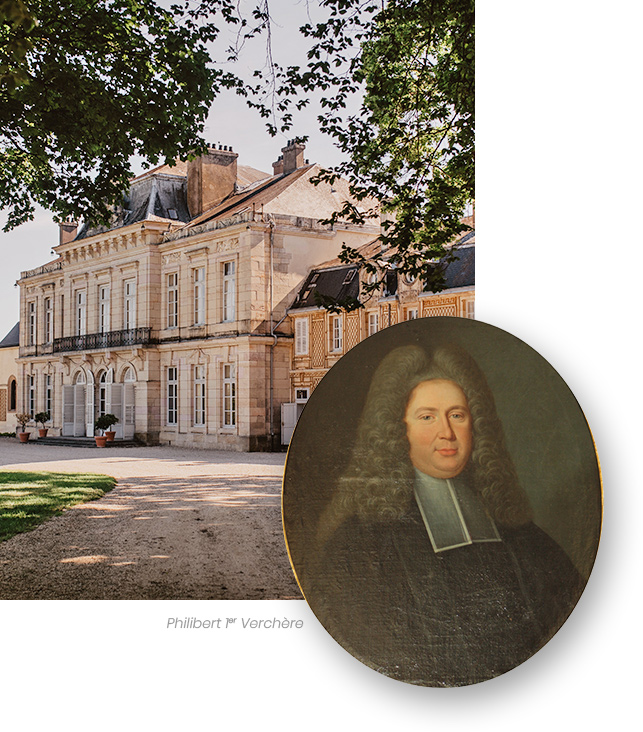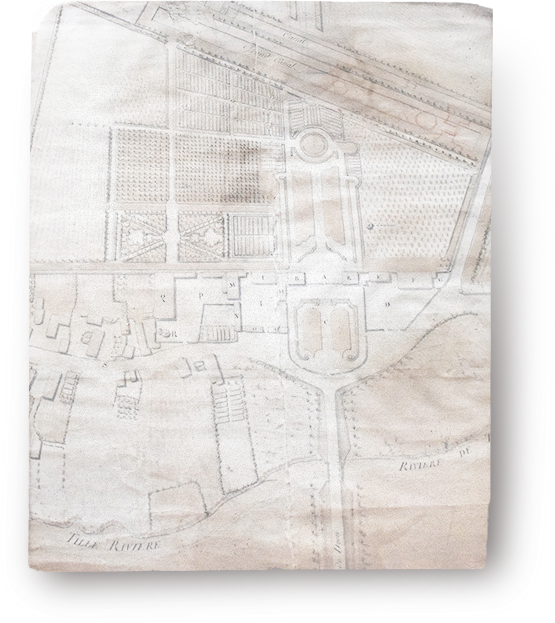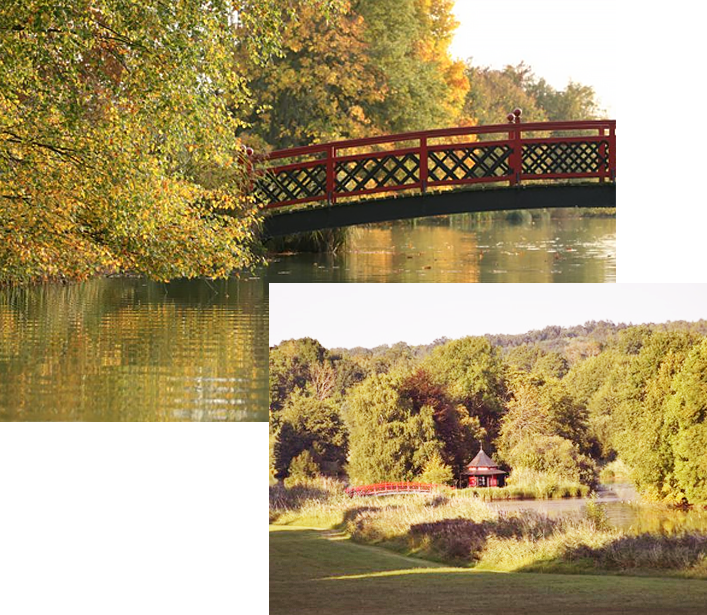The creation of the castle
Philibert Verchère, first president of the finances of Dijon at the beginning of the 18th century, bought the marquisate of Arcelot in 1711, and had the two wings of the castle built in 1720, a hunting lodge, and a chapel. His grandson, Philibert II Verchère d’Arcelot, president of the parliament of Burgundy, enlarged the residence in order to create a real reception castle.
It was the chief architect of the Ponts et Chaussées de Provinces in Burgundy, Thomas Dumorey, who was in charge of the construction from 1761 to 1765. The building thus became the first neoclassical construction in the region, a style which was inspired by culture and ancient art. The large stucco salon was already a major decoration in the region in the 18th century.

History
of a
castle...
Courtépée
Courtépée, an 18th century historian, marked by the beauty of the building, described the construction as follows: “The avenues, the gardens, the facade, the interior, everything exudes good taste and magnificence. The stucco salon is, with that of Longecourt, the most beautiful room that we know in Burgundy”.
Louise-Adélaïde
When the Terror regime was established in 1792, Louise-Adélaïde Verchère d’Arcelot, granddaughter of Philibert II Verchère and daughter of Antoine Verchère, found herself alone and without any resources at the castle.
But despite her young age, 11 years old, she regularly walked to Dijon (30 km round trip), for five years in order to appear before the revolutionary court, in order to assert her rights to the property. It is thanks to this young girl that you can discover today the work of artists and craftsmen of the 18th century, splendor of architecture and Burgundian art in a good state of conservation.
Story
of a
family...
The park
in the 18th century
From the first half of the 18th century, Philibert I Verchère had a pleasure garden laid out on the estate consisting of orchards, vines, vegetable gardens and groves. Throughout the 18th century, the site was laid out as a so-called French garden, where man controlled and dominated nature.
At the beginning of the 19th century, Antoine Verchère called on Jean-Marie Morel, the first garden theoretician, to create a landscaped park in the estate. He designed, for Joséphine de Beauharnais, the garden of the little Malmaison. The landscaped park, unlike the so-called “French” garden, had to give back its freedom to nature, without the intervention of man being visible. Changing slightly over time, the owners have remained faithful to the work undertaken by Jean-Marie Morel. The park of the Château d’Arcelot remains one of the best preserved sites of the famous theorist.


The domain
nowadays
The castle has remained in the same family since its construction and we are keen to share the history of the estate with you.
Composed of a small team passionate about the history of the castle, we will do everything we can to pass on our passion to you, during your visit or stay.

Why visit
the castle
By visiting the castle you will dive into the heart of the 18th and 19th centuries. The guided tour gives you access to the grand staircase which is part of typical 18th century architecture, with its trompe l’oeil ceiling open to the sky. You will then visit the picture gallery, the Tsar’s bedroom, the chapel, the yellow bedroom, the library, the billiard room and the dining room. The major element of the castle is the large living room, a ceremonial room par excellence where the walls of colored stucco, or marble stucco, of exceptional quality, are still visible.
You will meet personalities and events that have allowed the Château d’Arcelot to enter history. Thus you will learn why the Tsar’s room is so called, but also why Marshal Lyautey, an officer during the colonial wars and first resident general of the French protectorate in Morocco in 1912, is an emblematic figure in the history of the castle. Through the history of Arcelot, you will discover the key elements of the history of Burgundy in the 18th and 19th centuries.


